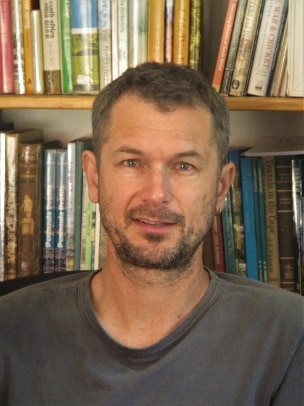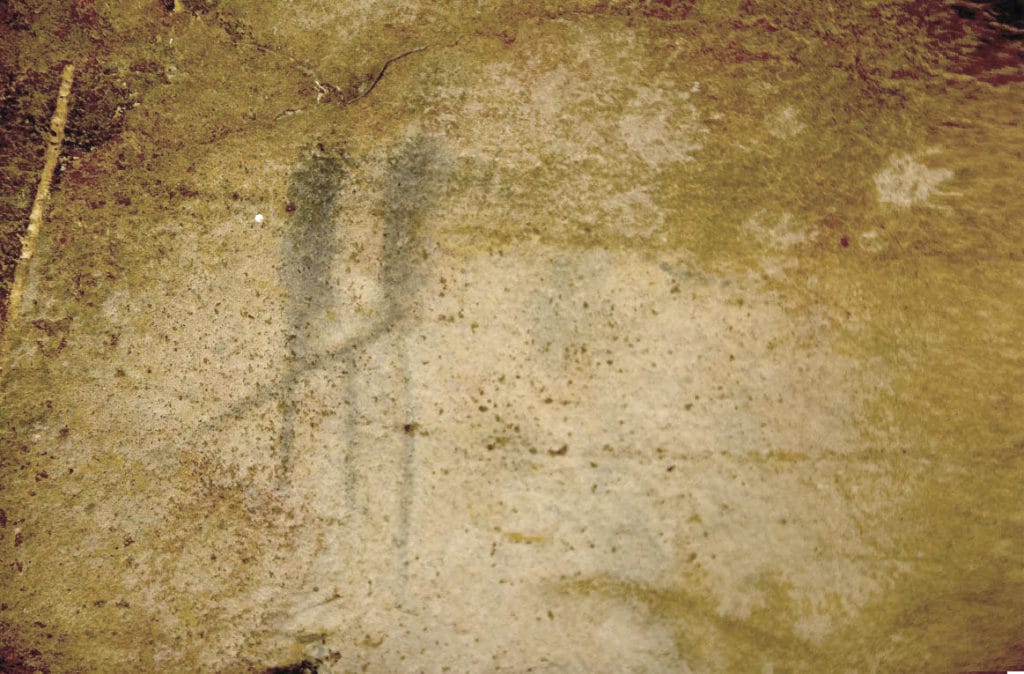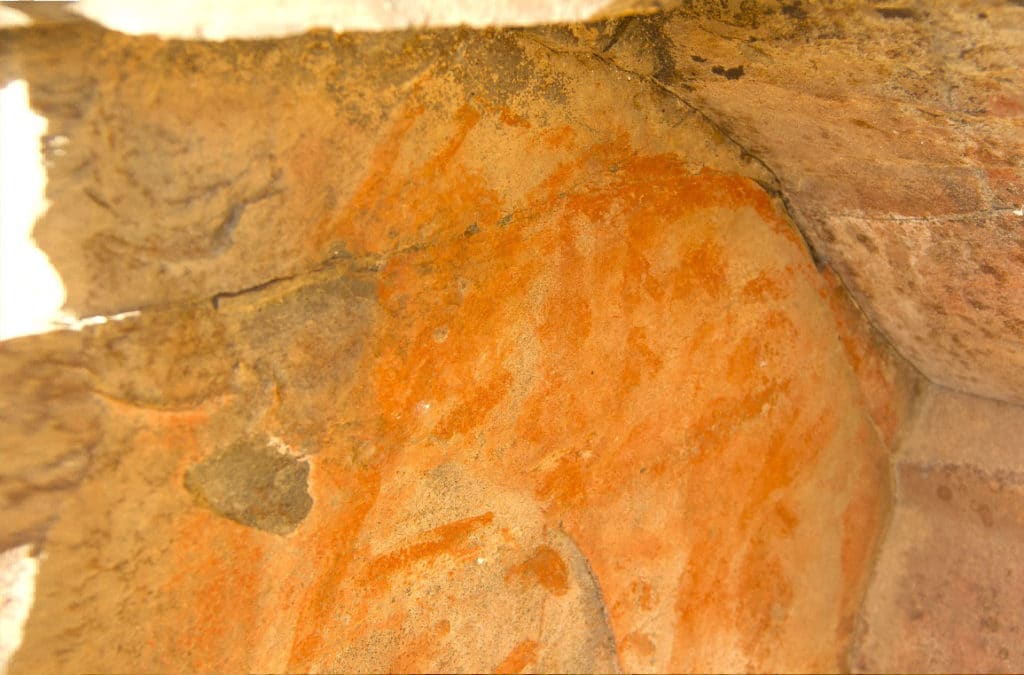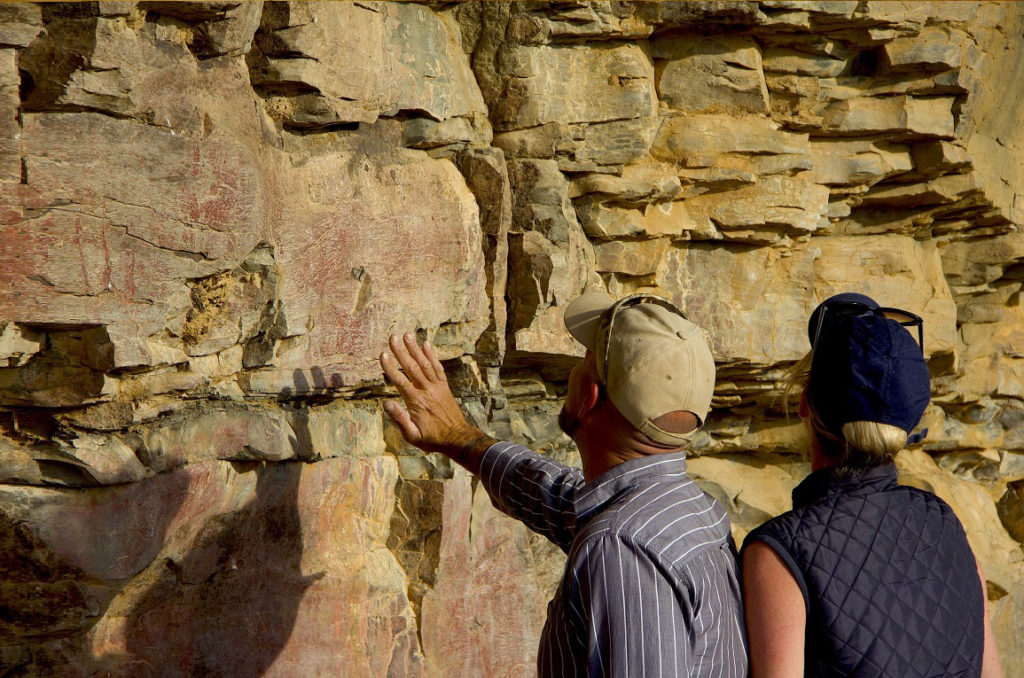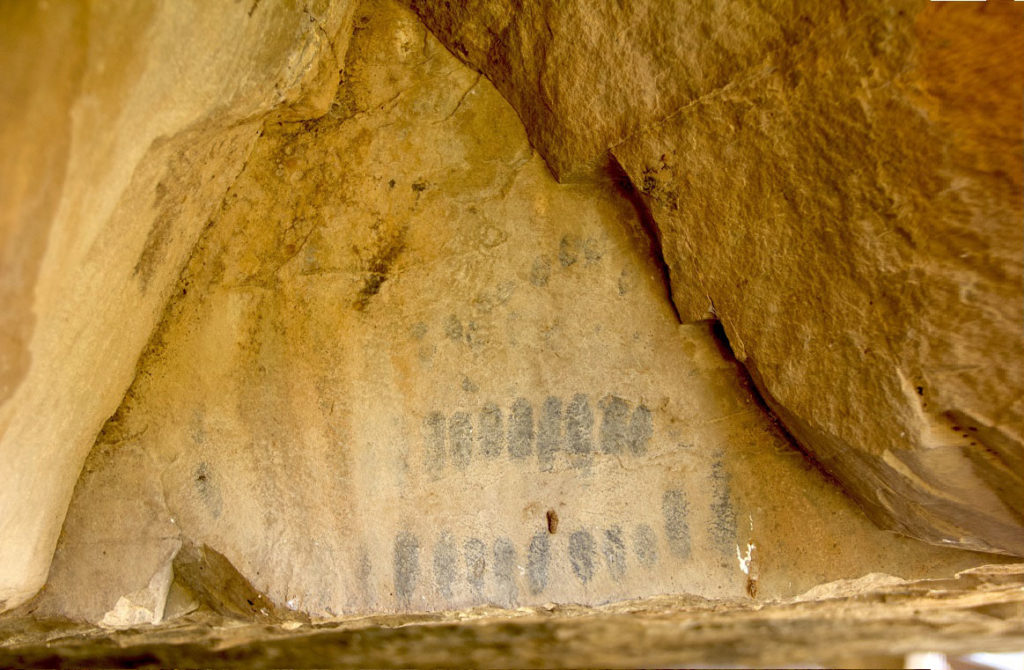During the last year of exploring the largely-uncharted hectares of wilderness at Magic Hills Private Game Reserve, we’ve found six previously-undiscovered rock art sites dotted around the reserve. We were so excited, we immediately got onto the phone with an expert, Archeologist Dr. Jayson Orton, of Asha Consulting in Cape Town. Amidst the 2020 COVID-19 crisis, Dr. Orton could not travel, and so we earnestly sent photos to him, for his feedback.
Dr. Orton quickly estimated that, while not perfectly preserved due to millennia of exposure, the rock drawings at Magic Hills appear to be Geometric Tradition paintings – a theory he will investigate on his upcoming trip to Magic Hills Private Game Reserve. According to Dr. Orton, the style of Geometric Tradition paintings that appear at Magic Hills are typical of the KhoenKhoen people. These were herding tribes that are known to have lived in South Africa for approximately 2000 years.
When asked if the painting can be dated, Dr. Orton says, “If there is carbon in the paint, then you could get a radiocarbon date. This, of course, destroys the art, by scraping paint off. The other option is if you find a painting or engraving on a rock in an archaeological deposit then you can date organic materials in the immediately overlying deposits to find out when the painting got buried.”
More about Geometric Tradition Rock Art
Dr. Orton also notes that an interesting feature of Geometric Tradition rock art is that they are usually found in rock shelters that aren’t suitable for occupation, but are close to water sources. The reasons for this remain unknown. The images are painted onto the rock using a paint made up of ochre (finely-ground rock in shades of red to yellow), which would have been mixed with various substances. There is still little understanding about the composition of the paint, and research is ongoing.
This form of rock art differs from rock engravings, where chipping and scraping of a weathered or softer rock surface would yield unweathered, lighter-coloured rock. Unlike the art found at Magic Hills, engraving would occur predominantly on exposed boulders.
Guests and visitors of Magic Hills will be afforded the opportunity to take excursions to some of the rock art sites on the reserve, with the advice of Dr. Orton as to which site are more sensitive, and not suitable for public access.
About Dr. Jayson Orton
Dr. Orton’s primary research interest relates to the introduction of herding to South Africa, with specific reference to the western half of the country. Secondary to this, is obtaining understanding of the sequence of changes that occurred through the last 5000 years or so and specifically in relation to stone tool types, ostrich eggshell beads and pottery.
